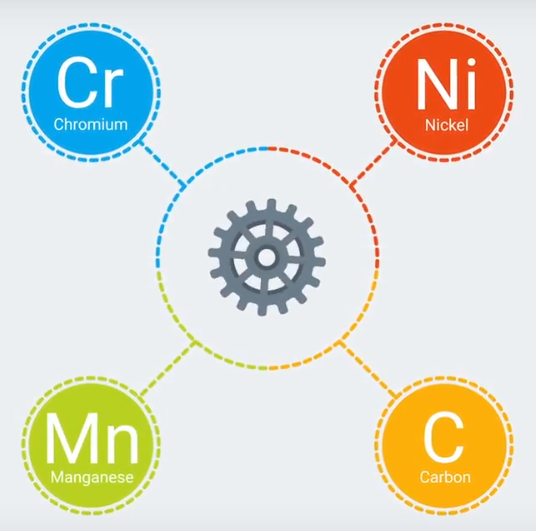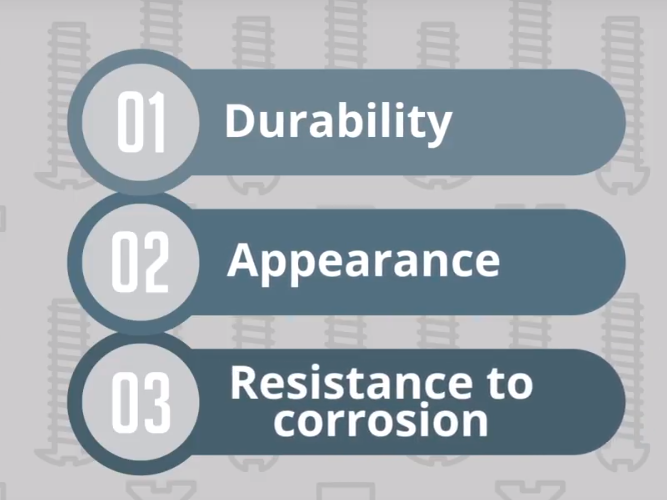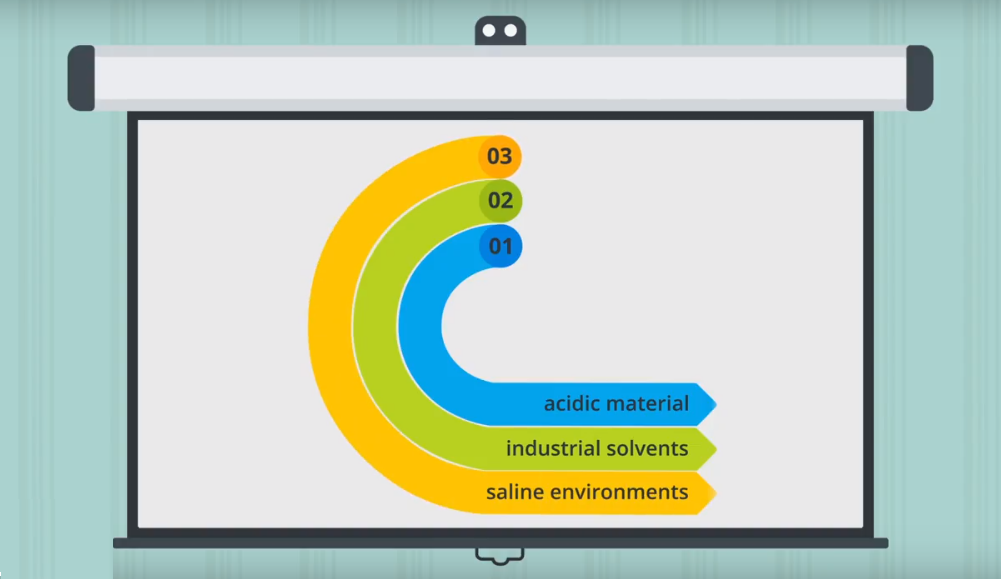Watch this video explaining the difference between 304 vs 316 Stainless Steel or read the article below.
What’s the difference between 304 and 316 stainless steel alloy? It’s a common question but one that should not be taken lightly. Stainless steel products contain a mixture of elements including:
- Chromium
- Nickel
- Carbon
- Manganese

Elemental Composition of Stainless Steel
The most common alloy is 304 which is used in a variety of applications for its durability, appearance, and resistance to corrosion.

Reasons to select 304 alloy
However, situations involving acidic material, industrial solvents or highly concentrated saline environments can cause corrosion and eventual failure of 304 stainless steel.

Reasons to choose 316 Alloy
316 Stainless Steel has the same chemical composition as 304 coupled with another element, Molybdenum. Molybdenum is an alloy that drastically enhances corrosion resistance, especially for environments prone to rust. This additional element turns common stainless steel into a superpower with the ability to withstand harsh environments.
|
304 Suitable Items |
316 Suitable Items |
|
|
While 304 is an economical and practical choice for most environments, it doesn’t have the corrosion-resistance of higher quality 316 stainless steel. On average, 316 stainless steel costs 20 – 30% more than 304. However, considering the price of replacing an entire process line, plus manufacturing downtime, these costs are insignificant.
When choosing between stainless steel alloys, remember to factor in what you are processing and where. For more help, please contact us.
